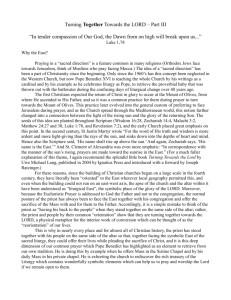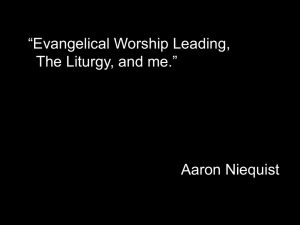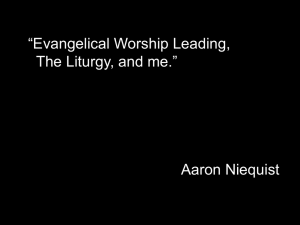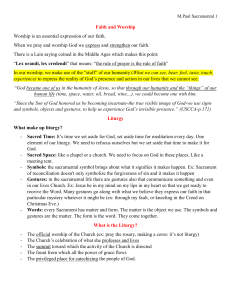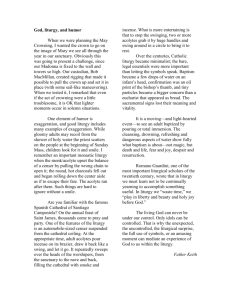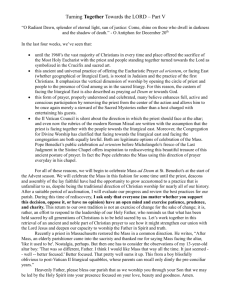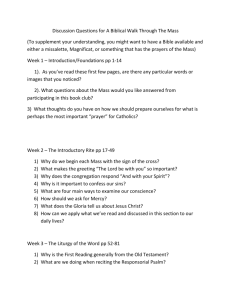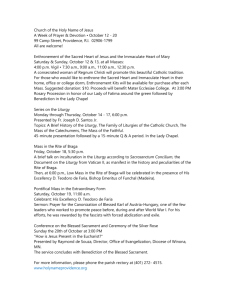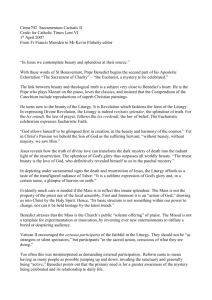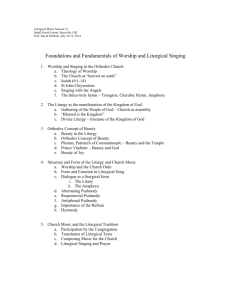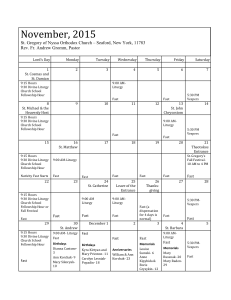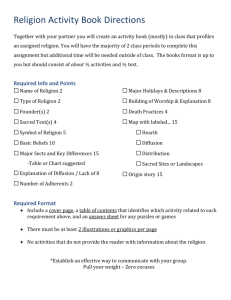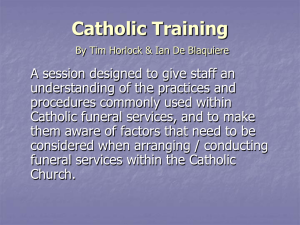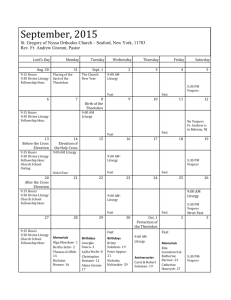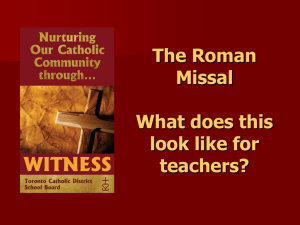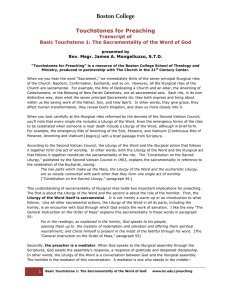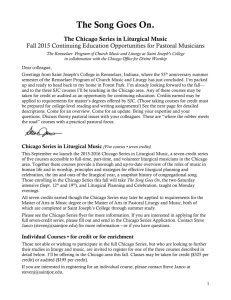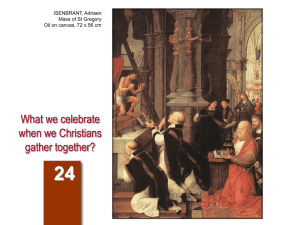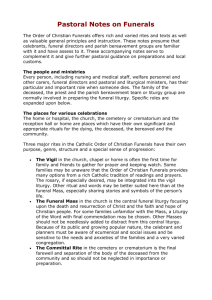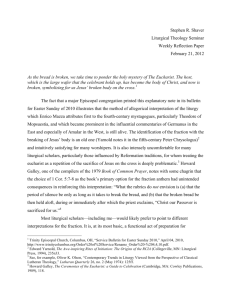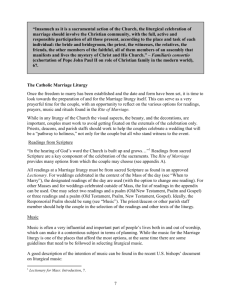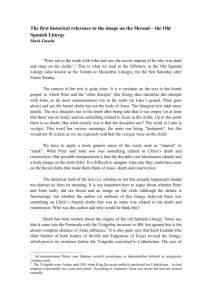Turning Together Towards the LORD * Part IV
advertisement
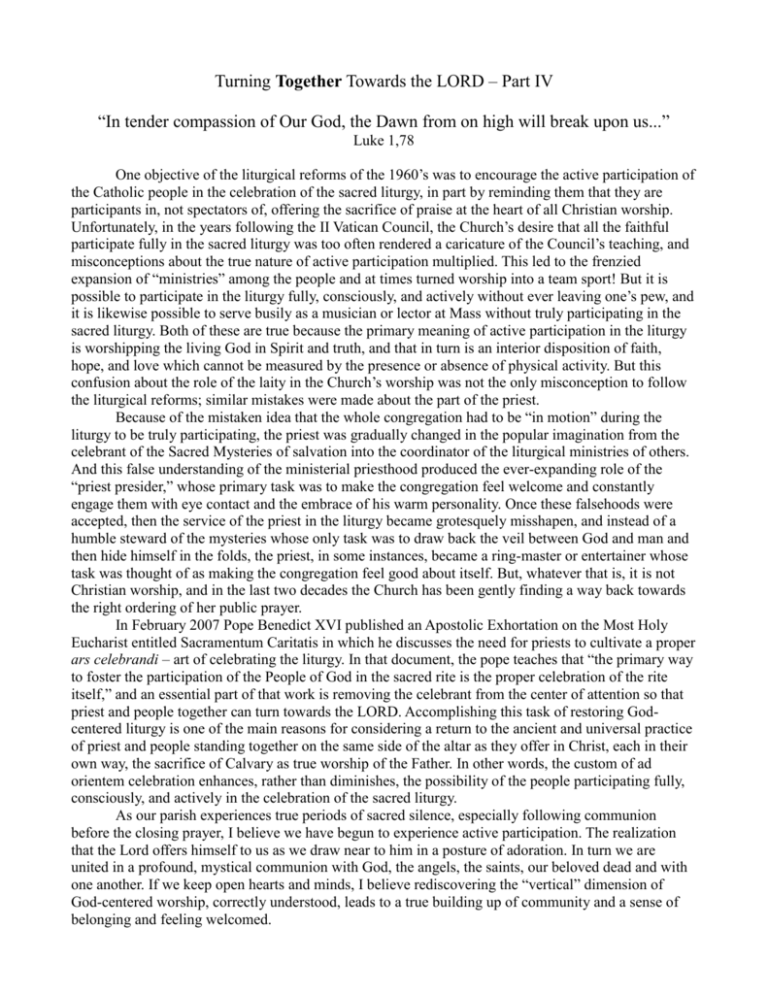
Turning Together Towards the LORD – Part IV “In tender compassion of Our God, the Dawn from on high will break upon us...” Luke 1,78 One objective of the liturgical reforms of the 1960’s was to encourage the active participation of the Catholic people in the celebration of the sacred liturgy, in part by reminding them that they are participants in, not spectators of, offering the sacrifice of praise at the heart of all Christian worship. Unfortunately, in the years following the II Vatican Council, the Church’s desire that all the faithful participate fully in the sacred liturgy was too often rendered a caricature of the Council’s teaching, and misconceptions about the true nature of active participation multiplied. This led to the frenzied expansion of “ministries” among the people and at times turned worship into a team sport! But it is possible to participate in the liturgy fully, consciously, and actively without ever leaving one’s pew, and it is likewise possible to serve busily as a musician or lector at Mass without truly participating in the sacred liturgy. Both of these are true because the primary meaning of active participation in the liturgy is worshipping the living God in Spirit and truth, and that in turn is an interior disposition of faith, hope, and love which cannot be measured by the presence or absence of physical activity. But this confusion about the role of the laity in the Church’s worship was not the only misconception to follow the liturgical reforms; similar mistakes were made about the part of the priest. Because of the mistaken idea that the whole congregation had to be “in motion” during the liturgy to be truly participating, the priest was gradually changed in the popular imagination from the celebrant of the Sacred Mysteries of salvation into the coordinator of the liturgical ministries of others. And this false understanding of the ministerial priesthood produced the ever-expanding role of the “priest presider,” whose primary task was to make the congregation feel welcome and constantly engage them with eye contact and the embrace of his warm personality. Once these falsehoods were accepted, then the service of the priest in the liturgy became grotesquely misshapen, and instead of a humble steward of the mysteries whose only task was to draw back the veil between God and man and then hide himself in the folds, the priest, in some instances, became a ring-master or entertainer whose task was thought of as making the congregation feel good about itself. But, whatever that is, it is not Christian worship, and in the last two decades the Church has been gently finding a way back towards the right ordering of her public prayer. In February 2007 Pope Benedict XVI published an Apostolic Exhortation on the Most Holy Eucharist entitled Sacramentum Caritatis in which he discusses the need for priests to cultivate a proper ars celebrandi – art of celebrating the liturgy. In that document, the pope teaches that “the primary way to foster the participation of the People of God in the sacred rite is the proper celebration of the rite itself,” and an essential part of that work is removing the celebrant from the center of attention so that priest and people together can turn towards the LORD. Accomplishing this task of restoring Godcentered liturgy is one of the main reasons for considering a return to the ancient and universal practice of priest and people standing together on the same side of the altar as they offer in Christ, each in their own way, the sacrifice of Calvary as true worship of the Father. In other words, the custom of ad orientem celebration enhances, rather than diminishes, the possibility of the people participating fully, consciously, and actively in the celebration of the sacred liturgy. As our parish experiences true periods of sacred silence, especially following communion before the closing prayer, I believe we have begun to experience active participation. The realization that the Lord offers himself to us as we draw near to him in a posture of adoration. In turn we are united in a profound, mystical communion with God, the angels, the saints, our beloved dead and with one another. If we keep open hearts and minds, I believe rediscovering the “vertical” dimension of God-centered worship, correctly understood, leads to a true building up of community and a sense of belonging and feeling welcomed.
